Fermenting Beer with White Labs WLP550 Belgian Ale Yeast
Published: October 15, 2025 at 5:33:11 PM UTC
This article delves into the practical aspects of using White Labs WLP550 Belgian Ale Yeast for both homebrewers and commercial brewers. It focuses on WLP550, a core strain from White Labs (Part No. WLP550), available in organic form. It's designed for classic Belgian styles such as saisons, witbiers, blondes, and browns.
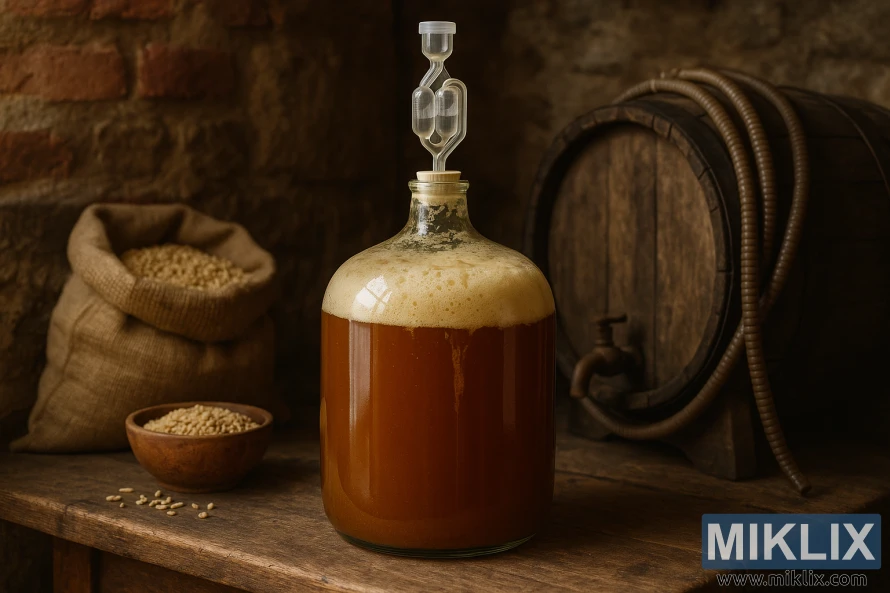
White Labs provides essential lab specifications for fermenting with WLP550. These include an apparent attenuation of 78–85%, medium flocculation, and a high alcohol tolerance of about 10–15%. The suggested fermentation range is 68–78°F (20–26°C), and the STA1 QC result is negative. The strain is known for its phenolic characteristics, imparting flavors of clove, allspice, and peppercorn, and it can handle medium-to-high alcohol levels.
This review of WLP550 will cover technical specifications, pitching and temperature strategies, and the expected flavor and aroma. It will also discuss fermenter and aeration choices, realistic fermentation timelines, and common troubleshooting approaches. Brewers looking for a detailed Belgian ale yeast review or guidance on using WLP550 will find practical advice and evidence-based tips in this article.
Key Takeaways
- White Labs WLP550 Belgian Ale Yeast is suited for saisons, witbiers, and Belgian blondes.
- Lab specs: 78–85% attenuation, medium flocculation, 10–15% alcohol tolerance, 68–78°F range.
- Expect phenolic notes of clove, allspice, and pepper; adjust temps to shape ester/phenol balance.
- Proper pitching rate, aeration, and fermenter choice change performance and clarity.
- The article provides real-world timelines, troubleshooting tips, and step-by-step fermentation strategies.
Why Choose White Labs WLP550 Belgian Ale Yeast for Belgian Styles
Homebrewers choose WLP550 for its classic Belgian spice profile, a must for many recipes. White Labs calls this strain very expressive. It's perfect for saisons, witbiers, blondes, and browns. The yeast adds phenolic notes like clove, allspice, and a peppery edge, fitting traditional Belgian recipes.
WLP550's alcohol tolerance is another reason it's favored for Belgian styles. It can handle beers with 10% to 15% ABV. This range is ideal for strong beers like Belgian Dark Strong Ale and Tripel, without losing its unique character.
The yeast's mouthfeel and finish are also valued. It has medium flocculation and high attenuation, near 78–85%. This results in dry finishes, common in many Belgian beers. Such dryness balances rich malts and complex sugars in stronger styles.
Availability as an organic option is important to some brewers. White Labs offers WLP550 in organic form. This allows brewers to create organic Belgian ales using certified ingredients.
WLP550's place in White Labs’ Belgian lineup is evident. It's alongside WLP500, WLP510, WLP530, WLP540, and WLP570. Brewers aiming for Achouffe-like flavors often choose WLP550. They seek its spice-forward and attenuating profile.
- Expressive phenolics for saison and witbier character
- 10–15% alcohol tolerance for strong Belgian styles
- 78–85% attenuation for a dry finish
- Medium flocculation for balanced clarity and mouthfeel
- Organic option for ingredient-conscious brewers
Profile and Technical Specs of White Labs WLP550 Belgian Ale Yeast
White Labs technical specs highlight WLP550 Belgian Ale Yeast as a Core strain, ideal for various Belgian styles. It is available as both a standard and organic option. The product's part numbers align with White Labs' cataloging for Core strains.
Official data indicates WLP550 attenuation falls within the 78–85% range. It boasts high alcohol tolerance, typically handling 10% to 15% ABV. Fermentation temperature is suggested to be between 68–78°F (20–26°C). The STA1 QC result is negative, showing no diastaticus activity.
White Labs technical specs classify WLP550 flocculation as medium. This means the yeast will generally clear with conditioning or filtration. Yet, some haze might remain, even with shorter conditioning times.
Brewers can expect robust fermentative performance and good attenuation for high-gravity worts. Practical advice includes planning for active attenuation. Also, allow extra time for conditioning if achieving clarity is crucial.
- Type: Core strain, suited to many Belgian beers
- WLP550 attenuation: 78–85%
- WLP550 flocculation: medium
- Alcohol tolerance: 10–15% ABV
- Fermentation temp: 68–78°F (20–26°C)
Comparing White Labs technical specs with other Belgian isolates from White Labs and Wyeast, WLP550 stands out. It has higher attenuation among common Belgian strains. This makes it a dependable choice when finishing gravity and fermentative vigor are key.
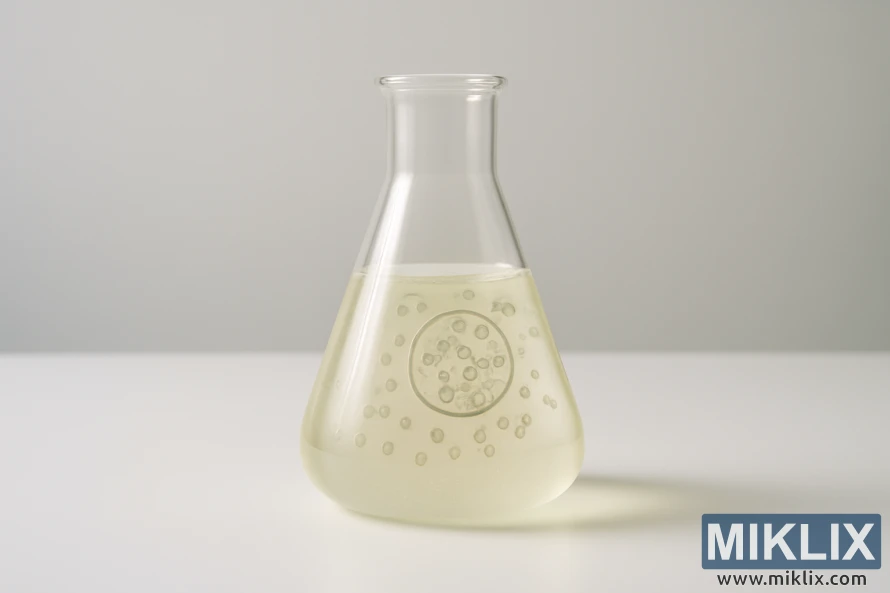
Flavor and Aroma Expectations with WLP550
White Labs WLP550 is celebrated for its distinct phenolic character. Brewers often describe its flavor as spicy and peppery. It brings out clove-like notes, allspice, and a savory backbone, perfect for saisons, witbiers, and Belgian blondes.
The aroma of WLP550 changes with fermentation conditions. At cooler temperatures, the yeast's phenolics dominate, offering clear clove and peppercorn scents. Warmer temperatures, on the other hand, encourage the production of esters, leading to fruitier aromas like pear, orange, and tangerine.
The outcome of your beer is heavily influenced by pitch rate and temperature. Underpitching or fermenting at high temperatures can lead to increased higher alcohols and fusels. These compounds can add depth but risk becoming solventy if not managed properly.
Choose WLP550 for a bold, spicy character. Pair it with a well-balanced grain bill and hopping schedule to harmonize esters and phenols. In lighter Belgian styles, the spicy notes can enhance the malt and hop flavors without overpowering them.
- Low temps: emphasize Belgian yeast phenolics and clove notes.
- Moderate to high temps: boost fruity esters in the WLP550 flavor profile.
- Control pitch and oxygenation to limit harsh fusels and keep WLP550 aroma clean.
Recommended Beer Styles to Brew with WLP550
White Labs WLP550 shines in a variety of Belgian and farmhouse styles. It's ideal for brewing Belgian Dark Strong Ale, Dubbel, Tripel, saison, witbier, and Belgian blonde and brown ales.
The yeast's high alcohol tolerance and strong attenuation make it perfect for high-gravity brews. It's great for Tripels and Belgian Dark Strong Ales aiming for 10–15% ABV. Expect a dry finish and warming alcohol notes.
For brewing a WLP550 saison, the yeast adds peppery phenolics and a bright ester profile. This complements spicy and herbal grists well. Keep the mash simple and allow for warm, active fermentation to enhance attenuation and complexity.
When brewing a WLP550 witbier, use a lighter grist with wheat and a gentle mash. The yeast's clove-like phenolics and soft esters pair well with coriander and orange peel. Monitor fermentation to keep the beer balanced and lively.
- Dubbel and Tripel: Add darker malts or candi sugar to bring dried fruit notes like raisins and plums.
- Belgian Blonde and Brown: Let the yeast highlight malt complexity while keeping a clean, attenuated finish.
- Saison and Witbier: Use leaner grists and warmer temps to emphasize peppery and citrusy characters.
Recipe choices have a significant impact on the final beer, more than the yeast alone. Choose malts, adjuncts, and mash profiles that support WLP550's strengths. This will help produce balanced, expressive beers.
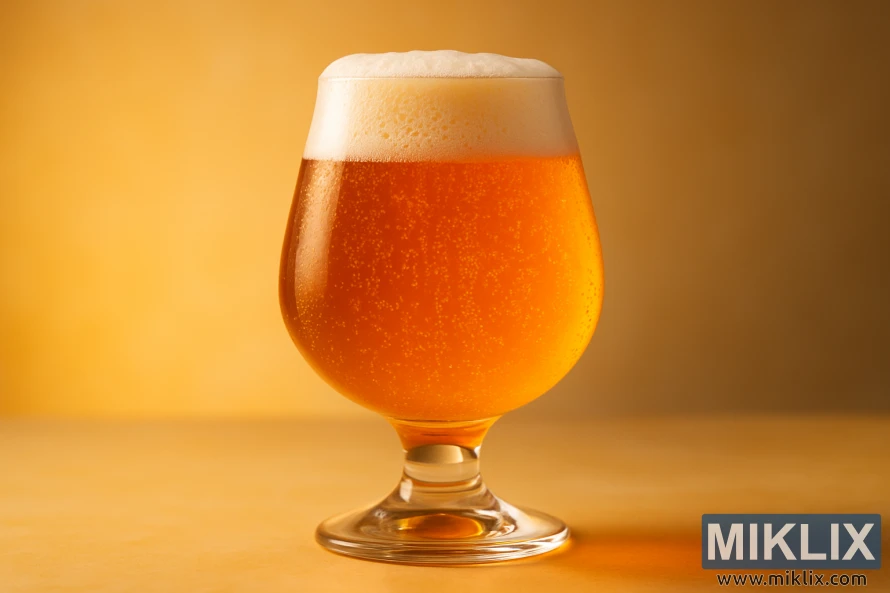
Pitching Rate Guidance for Belgian Ale Yeasts
Belgian ales are often pitched at lower cell densities than typical American micros. Industry norms for ales suggest about 1 million cells per mL per degree Plato. Yet, Trappist and Belgian houses have historically used much lower rates. This approach shapes ester and phenolic profiles.
Examples illustrate the range. Westmalle has reported a pitch near 0.25 million cells/mL/°P for a high gravity beer. Duvel has used roughly 0.44 million cells/mL/°P. These lower rates help create pronounced fruity complexity with strains like WLP550.
White Labs and fermentation experts advise caution. Lowering the WLP550 pitching rate can raise desirable esters. But dropping too far risks solventy off-flavors and sluggish starts. Boosting cell counts tends to reduce ethyl acetate and can tighten fermentation character.
For homebrewers, follow standard ale guidelines as a baseline. Experiment by modestly reducing pitch for classic Belgian profiles if you are confident in yeast vitality and oxygenation. For higher gravity batches, build a proper yeast starter for WLP550. This ensures healthy cell numbers and fermentation vigor.
- Use a conservative Belgian yeast pitch rate when aiming for spicy, fruity esters.
- Create a yeast starter for WLP550 when gravity exceeds typical ale ranges.
- Avoid severe underpitching that could stall fermentation or cause off-flavors.
White Labs notes a professional convention of roughly 2 liters of yeast per barrel. Yet, many Belgian brewers go below that value. They rely on very fresh, vigorous cultures. Keep yeast health, aeration, and timing in mind when pitching WLP550. This balances character with reliability.
Fermentation Temperature Management Strategies
White Labs suggests a fermentation temperature range of 68–78°F (20–26°C) for WLP550. Belgian brewers employ different strategies. Some start with cooler temperatures and let the wort warm up during fermentation. This method helps balance esters and phenolics.
Homebrewers aiming for a more restrained ester profile can begin fermentation in the upper 60s F (~20°C). Gradually increasing the temperature to the low 70s F (22–24°C) aids in yeast completion. It also enhances fruity esters without introducing harsh fusels.
- Monitor wort temperature with a probe in the beer, not just ambient, for accurate Belgian yeast temperature control.
- Avoid uncontrolled spikes above roughly 84°F (29°C). High peaks risk solventy or fusel notes and can stall fermentation.
- Use shallow fermenters or multiple smaller vessels to reduce the magnitude of peak temperature rise.
Industry examples vary widely. Achel and Westmalle start cool and rise into the 70s. Westvleteren and Caracole allow higher seasonal swings. Emulate the intent rather than copy exact numbers when applying WLP550 temp management at home.
For tighter control consider these steps:
- Place your thermometer or probe directly in the wort and record temps every few hours during the first two days.
- Set your ambient chamber a few degrees cooler than target to allow the exotherm to reach desired WLP550 fermentation temp naturally.
- If fermentation runs hot, increase headspace or move to a cooler room to slow the rise safely.
Anecdotal reports indicate krausen formation in about 14 hours at 68–71°F. This range supports steady activity and neutral airlock aromas for many homebrewers. Use this feedback and adjust slightly for your recipe and equipment to achieve consistent Belgian yeast temperature control and reliable WLP550 temp management.
Managing Attenuation and Reaching Terminal Gravity
WLP550 attenuation typically ranges from 78–85%, leading to a dry finish. Real-world Belgian ales can exceed this range, influenced by fermentation temperature and wort composition. For instance, Duvel and Chimay beers show higher attenuation when fermented warm or with simple sugars.
Several factors impact fermentation depth. Temperature is a key factor; warmer fermentations tend to increase attenuation. The type of wort also plays a role. Adding candi sugar or simple sugars can elevate attenuation beyond WLP550's baseline.
Pitch rate, yeast health, and aeration also influence fermentation. Underpitching or stressed yeast can hinder progress. Healthy, well-aerated yeast, on the other hand, tends to finish stronger. Monitoring yeast starters and ensuring adequate oxygenation is crucial to avoid incomplete fermentation.
Instead of stopping at expected attenuation, aim for terminal gravity WLP550. Many brewers prematurely stop conditioning, leading to sweetness and off-flavors. Incomplete fermentation can also cause bottle conditioning issues.
- Measure gravity at consistent intervals to confirm decline.
- Allow extra time if gravity plateaus; some Belgian strains need a slow finish.
- Raising temperature by a few degrees late in fermentation often nudges yeast to full attenuation.
After reaching the finishing gravity, Belgian yeast can leave behind higher alcohols and esters. These compounds require time to mellow. Conditioning at stable cellar temperatures aids in stabilizing chemistry and improving clarity. Patience is rewarded with cleaner flavors and a true final gravity.
Controlling Esters and Phenolics During Fermentation
Brewers can influence Belgian yeast esters and clove-like phenolics from the start by managing temperature, pitching rate, aeration, and wort strength. Temperature drives ethyl acetate and fruity esters up as it rises. Cooler starts favor phenolic expression, giving a rounded clove note typical of many Belgian styles.
Pitching rate matters. A higher pitch tends to suppress large ethyl acetate spikes. A modestly reduced pitch can lift Belgian yeast esters for more complexity, but underpitching risks sluggish fermentation and off-flavors. Balance is the goal.
Adequate early aeration helps yeast build biomass and can curb runaway ester production later. Inadequate oxygen often results in elevated esters. Original gravity also plays a role; richer worts usually mean more ester formation if other variables remain constant.
Fermenter design nudges aroma outcomes. Shallow vessels or multiple small fermenters increase surface area and venting, which can temper extreme ester suppression seen in tall cylindro-conicals. CO2 management and headspace affect how volatile esters and phenolics evolve during active fermentation.
Practical approach for WLP550: start at the lower end of the yeast’s range to let phenolics develop while yeast ramps up. After two to four days, raise temperature a few degrees for controlled ester production and to help finish attenuation. Avoid abrupt temperature swings that can create solventy or harsh notes.
Tuning the pitch and oxygen together gives control. If you aim to manage phenolics WLP550, prioritize steady oxygen at pitch, then use a small temperature ramp to shape Belgian yeast esters without pushing the yeast into stress.
- Begin cool to encourage clove phenolics.
- Ensure measured aeration at pitching.
- Use modest pitch reductions only when yeast health is assured.
- Raise temperature gradually to build esters and complete attenuation.
- Choose fermenter geometry with volatility and gas exchange in mind.
These levers let brewers control esters phenolics WLP550 while keeping fermentation stable and flavorful. Experiment in small batches to dial the exact balance for your recipe and equipment.
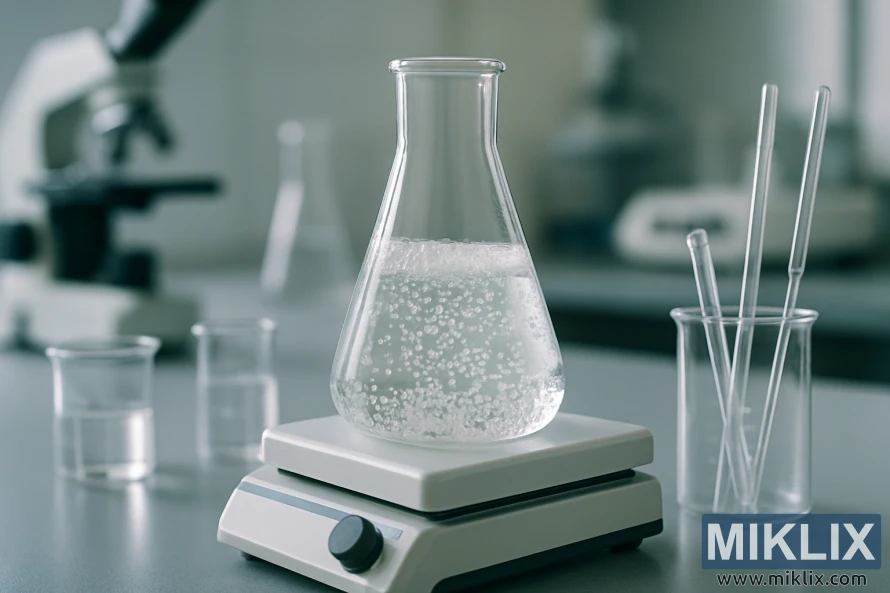
Flocculation, Clarity and Conditioning with WLP550
White Labs rates WLP550 flocculation as medium. This means a fair amount of yeast will stay suspended during primary fermentation. Belgian yeast clarity often trails behind that of neutral ale strains. This results in a soft haze unless additional steps are taken.
To achieve bright beer, extended conditioning of WLP550 is necessary. Cold crashing for several days can help drop yeast more quickly. Fining agents like gelatin or isinglass can also enhance clarity without removing flavor.
Many Belgian brewers employ secondary conditioning or use bright tanks to refine dubbels and tripels. Conditioning WLP550 at cellar temperatures for two to six weeks aids in mellowing esters and fusels. This process also makes haze less noticeable.
- For saisons and rustic ales, accepting some haze is part of the style.
- If clarity is crucial, consider cold conditioning, fining, or gentle filtration.
- Check STA1 results before bottling; WLP550 shows STA1 negative, so diastaticus-driven overattenuation is unlikely.
Keeping records of time, temperature, and conditioning steps is essential. This practice facilitates repeatable results. It also helps balance the characteristic Belgian yeast clarity with the desired appearance of your recipe.
Practical Fermenter Choices and Their Impact
Fermenter geometry is crucial for Belgian beers. Tall, narrow cylindro-conicals concentrate CO2 near the yeast, often suppressing ester formation. In contrast, shallow fermenters provide more surface area, allowing esters and phenolics to show more strongly.
Homebrew vessels like buckets and glass carboys fall between these extremes. A carboy vs bucket Belgian yeast setup cannot replicate the deep tanks used commercially. Using multiple shallow fermenters can help reduce heat spikes and spread fermentation activity across smaller volumes.
Open fermentation has a long history in Belgian brewing. It encourages top-cropping and delivers fresh yeast character. Yet, it raises the risk of contamination, so balancing the desire for that rustic profile with strict sanitation is essential.
Temperature control is the most practical way to shape ester output. Utilize a swamp cooler, temperature-controlled chamber, or glycol jacket to maintain steady temperatures. Ensure the fermenter you choose can accommodate your cooling method before starting.
Probe placement affects what you read. Side-on strips and ambient sensors often lag behind wort temperature. Thermowells or internal probes provide clearer readings inside the beer. Glass carboys insulate, so place probes where wort contacts them directly.
When planning a recipe with WLP550, consider the fermenter's effects on esters. For delicate esters, opt for a taller vessel and tight temperature control. For bolder ester and phenolic expression, choose shallower vessels or open fermentation, managing sanitation carefully.
Practical fermenter choice WLP550 decisions involve vessel shape, control options, and workflow. Decide if carboy vs bucket Belgian yeast handling fits your schedule and hygiene standards. Match the fermenter to the flavor profile you desire and the control you can reliably maintain.
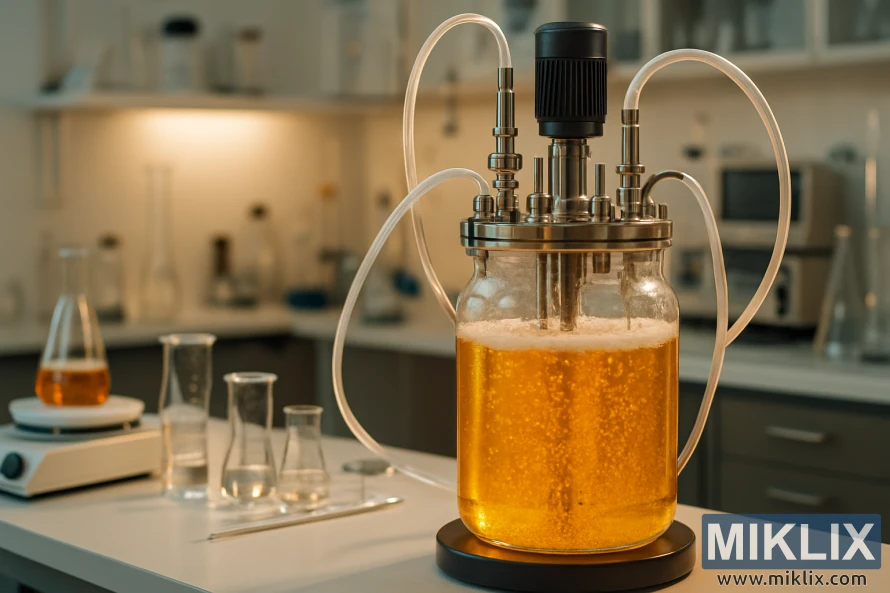
Aeration, Oxygenation and Yeast Health
Proper aeration for Belgian yeast is crucial for a clean, vigorous fermentation. Before pitching, give the wort a good shake or splash. For higher gravity batches, use pure oxygen. This helps cells build sterols and unsaturated fatty acids, essential for healthy membrane function.
WLP550 oxygenation impacts ester production. Low oxygen levels can lead to higher ester formation and slow starts. Brewers aiming for a balanced Belgian character should match aeration to gravity and desired ester profile.
Yeast health WLP550 relies on pitching rate and vitality. A fresh, well-made starter boosts viability for strong beers, reducing sluggish fermentation risk. Top-cropping and active cultures, used by Belgian breweries, allow lower pitch rates while maintaining yeast robustness.
Look for signs of a fast, vigorous start. Krausen within 12–24 hours indicates good vitality. If fermentation stalls or shows delay, check cell counts and viability. Re-pitching with a healthy starter or adding oxygen early can revive a stuck batch.
- For ordinary-strength ales: vigorous aeration by shaking can suffice.
- For high-gravity worts: use controlled oxygenation and a larger starter.
- When targeting delicate esters: reduce aeration slightly while monitoring yeast health WLP550.
Track fermentation pace and aroma development. Adjust future brews based on how WLP550 oxygenation and pitching choices influenced ester balance and attenuation. Small, consistent practices yield repeatable results with this Belgian ale yeast.
Real-World Fermentation Timelines and User Experiences
Homebrewers often find WLP550 fermentation to kick off quickly. Krausen formation is visible within 14 hours, and strong convection occurs within 48 hours. This is typical when yeast health and oxygenation are optimal.
Commercial Belgian beers, like Duvel, exhibit longer, more pronounced fermentation rises. These beers see wort temperatures reach about 84°F after a five-day fermentation surge. Homebrewers should anticipate a significant temperature increase, often at least 7°F (4°C), during the peak activity phase.
Most brewers observe primary fermentation activity peaking between 48 and 72 hours. This is when yeast health and pitching rate are at their best. The time it takes to reach terminal gravity varies based on original gravity and temperature control. It's wise to allow ample time for fermentation rather than rushing the process.
Conditioning is crucial for flavor and clarity. Extended conditioning periods, often weeks, allow higher alcohols and esters to integrate. This enhances the polish in Belgian-style beers. Many homebrewers report smoother profiles after additional cellar time.
Aggregated WLP550 user experiences show consistency and expressiveness. With basic temperature control and proper aeration, the strain produces vigorous, predictable fermentations. These fermentations accurately reflect the recipe choices.
- Expect fast onset: visible krausen within a day for active pitches.
- Plan for temperature rise: prepare for at least a 4°C jump during peak activity.
- Allow extra time to finish: terminal gravity timing varies with gravity and temp.
- Use extended conditioning: weeks of conditioning often improve balance.
These real-world notes combine commercial practice and crowd-sourced homebrew observations. They provide realistic expectations for WLP550 fermentation time, user experiences, and homebrew reports.
Common Troubleshooting and How to Fix Issues
Stalled or stuck fermentations are a common issue with Belgian strains. Causes include underpitching, poor oxygenation, low yeast viability, or abrupt cooling after a warm start. To fix stuck fermentation WLP550, consider re-pitching a healthy slurry or an active starter. Gently raise the fermenter temperature by a few degrees to revive activity before adding more yeast.
Solventy and fusel off-flavors often come from temperature spikes, severe underpitching, or stressed yeast during fermentation. Prevent these Belgian yeast problems by maintaining steady temps and pitching enough viable yeast. If off-flavors are present but not extreme, extended conditioning can help mellow harsh notes over time.
Excessive phenolics or strong clove character can result from fermenting too cool for the desired balance. To address this, allow a controlled temperature rise to bring esters and phenolics into harmony. Avoid long periods of suppressed ester production if you want a rounded Belgian profile.
- Cold haze and slow clearing: WLP550 shows medium flocculation; try a cold crash or use finings like gelatin or isinglass.
- Filtration or extra conditioning time will also improve clarity when needed.
- Overattenuation and thin body: raise mash temperature or include dextrin malts to boost mouthfeel.
Common corrective actions for Belgian yeast problems include oxygenating thoroughly at the start, using fresh White Labs packs or a healthy starter, and avoiding sudden temp swings. If you need to fix stuck fermentation WLP550 fast, re-pitch with a vigorous yeast strain known for good attenuation and viability.
- Confirm active gravity change over 24–48 hours before drastic steps.
- Warm the fermenter 3–5°F and swirl gently to resuspend yeast.
- Prepare and pitch an active starter or a fresh White Labs vial if gravity refuses to budge.
For solventy notes, focus first on stable fermentation conditions in future batches. To prevent thin beer, adjust the mash profile toward higher conversion temperatures or add specialty malts like carapils. These steps reduce the chance you will need intensive WLP550 troubleshooting on future brews.
Keep detailed records of pitch rates, oxygenation, and temperature programs. That habit makes diagnosing Belgian yeast problems quicker and improves your odds of clean, lively fermentations with WLP550 in subsequent batches.
Conclusion
WLP550 summary: White Labs WLP550 Belgian Ale yeast is known for its expressive, phenol-forward profile. It has high alcohol tolerance and reliable attenuation. This yeast brings the spicy, clove-like character typical of Belgian ales, suitable for a variety of styles.
Best practices for WLP550 include maintaining yeast health and controlling fermentation. Proper aeration and a starter for high-gravity batches are crucial to avoid underpitching. Start fermentation cool, then allow a measured temperature rise to balance esters and phenolics.
Practical cautions: avoid uncontrolled temperature spikes and extreme underpitching. These can lead to solventy off-flavors or stalled fermentations. Choose the right fermenter size and aeration strategy to shape the ester/phenolic profile for your target style. White Labs WLP550 conclusion: for those seeking an Achouffe-like spicy Belgian character, WLP550 is a strong, flexible option. It requires mindful fermentation control and the best practices outlined above.
Further Reading
If you enjoyed this post, you may also like these suggestions:
- Fermenting Beer with Lallemand LalBrew Windsor Yeast
- Fermenting Beer with White Labs WLP530 Abbey Ale Yeast
- Fermenting Beer with CellarScience Hazy Yeast
